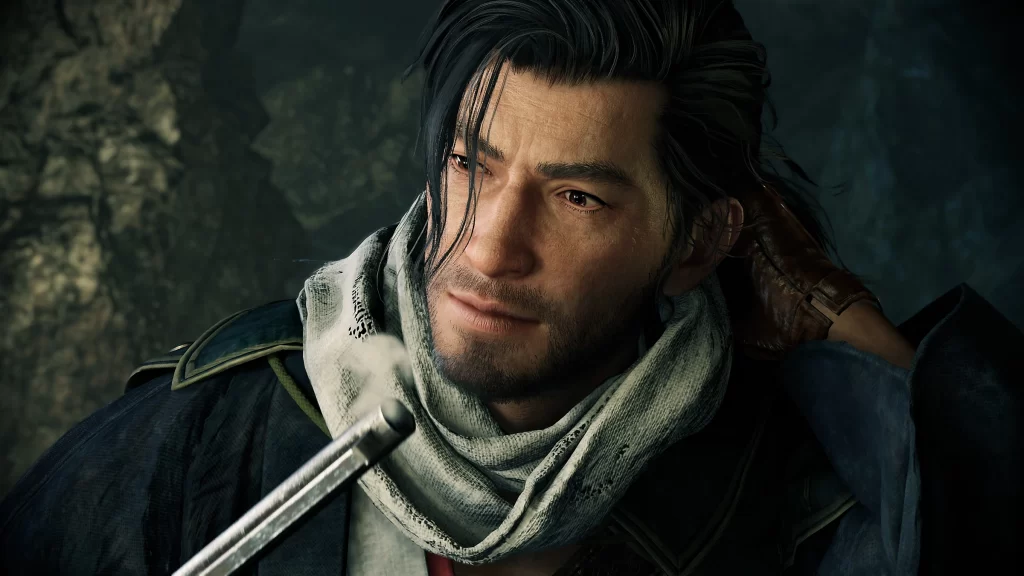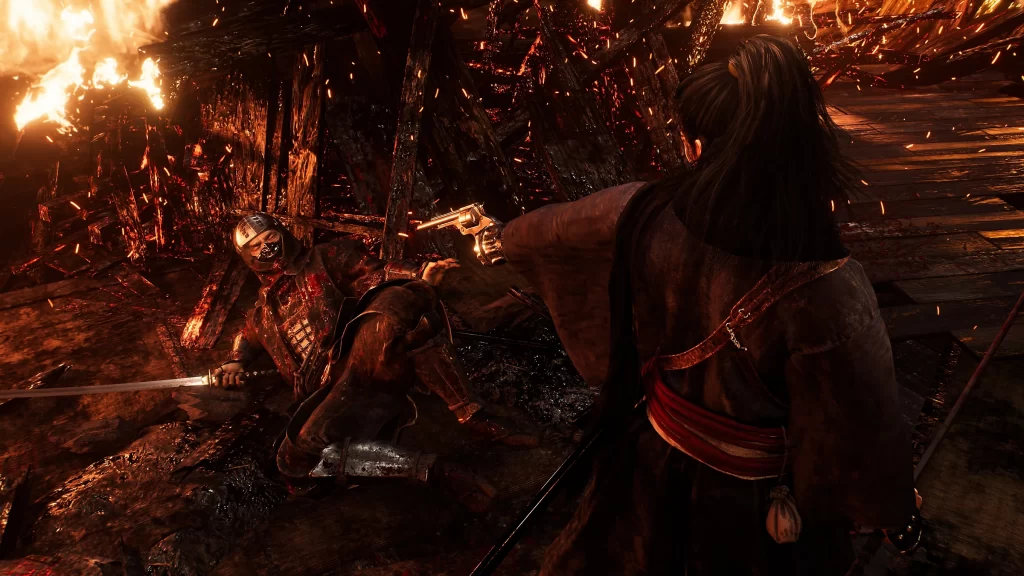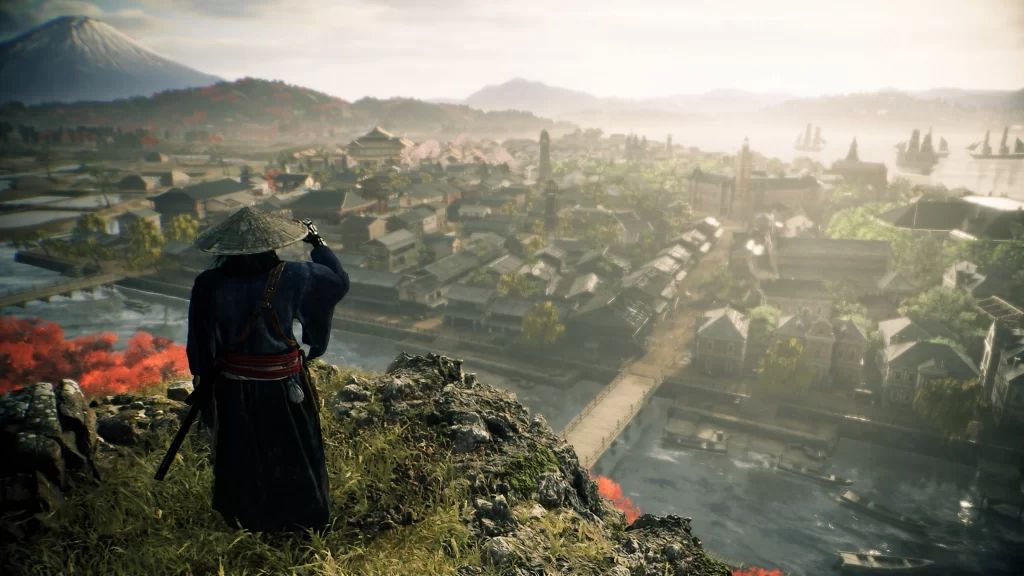I’ll start this review of Rise of The Ronin by being honest, I have always had and always will have a bias for Team Ninja. This goes back to Ryu Hayabusa as he hacked and slashed his way through enemies through two Ninja Gaiden titles, some of the best action games ever made. Then Ninja Gaiden 3 was released, following their former leader’s departure and everything changed. I was worried there was no path forward for the studio. That was when Nioh was released.
Now, Nioh wasn’t the perfect vessel, and as some would point out it was built on the success of Dark Souls. But that didn’t matter, their imitator served the purpose of letting Team Ninja’s excellent swordplay shine through like a beacon in the darkness, a reminder of why they were at one time kings among men. And from there, history. They were never the best, never perfect, but always fun experiences that begged you to sink your time into them. We as gamers are products of our experiences and should never be ashamed to admit that.
Rise of The Ronin isn’t the plateau of the mountain, it’s not the perfect experience. Like the world they crafted here, soaked in political violence and historical conflict, it’s rough around the edges with lessons to take away. It is, however, Team Ninja’s crowning achievement. Built on the bones of everything that came before, and a collection of other games from across the industry, to create an experience that feels both familiar and unique. Somewhere along the way, I was lost in Team Ninjas’ Japan, and I never wanted to be found.

Built on the bones of everything that came before, and a collection of other games from across the industry, to create an experience that feels both familiar and unique.
We start with a simple concept. FromSoftware had their open-world take on their souls games with Elden Ring, can the Nioh series do the same? At Rise of The Ronins‘ heart, it is a continuation of their Nioh series, featuring challenging, blistering fast-paced combat. Add a dash of Ghost of Tsushima on top of that, and even borrow from other experiences like Assassin’s Creed, Like A Dragon: Ishin, and so many more.
So often while playing the game was I reminded of other games, and it would be too hard to list them all. You would think that all those influences would affect the overall product, too many cooks spoil the broth after all, but in this case, they don’t. For a studio unfamiliar with open-world design I expected the lacking visuals that the game presents, I didn’t expect them to seem so at home with the design. They adopt what works for them, and expel the elements that don’t, but we will get to that.
The story trades one war (The Sengoku warring states era of Nioh) for the Bakumatsu final years of the Edo Period, during the Boshin War. This was a period that saw the declining Tokugawa shogunate at war with several anti-shogunate factions. This period also saw the expansion of Western civilization into Japan before the Meiji Restoration period, which is considered to be the beginning of modern Japan.
Since the game blends real-world events with its main story, you can expect several main cast members to be real-world figures. This is made apparent on the first mission where you are sent to Commodore Perry’s ship to steal several documents, and ultimately face him as a boss. Your character is a set of twins, known as blade twins, who are both trained in the swordplay of a samurai and stealth of an assassin, with that first mission training you in both.
The player customizes Both blade twins in the character creation menu which should be familiar to those who have played Team Ninja titles. Honestly, while the game has been hammered on its graphics, your leads look pretty good. Frustratingly, the first mission ends with one of the characters seemingly being cut up as it is made clear the twin you pick in a pivotal choice will be your main from here on out. Now, it takes a while for this to pay off, but it does. I will not speak to later events but trust me, sticking with it is rewarded.
Missions in the game do summon images of classic Nioh, though they also manage to set themselves apart as well. Infiltrating the boat for instance felt right in their wheelhouse as you slash and sneak your way through open corridors and tight hallways to make it to Perry’s ship. Later missions have you free a consulate from occupation, while another saw me gunning down American soldiers with a Gatling gun.
The biggest downside to missions is they are short. Most can be completed in 15 to 20 minutes, BUT much of that time was spent on the mission boss that inevitably awaits to put your skills to the test. Their strength, how versatile they are to take on. In many, you start right outside the area, allowing you to get a lay of the land and decide how you plan to conquer them. Aided by the tools the game gives you, like a glider, a grappling hook, and even a flamethrower, each engagement feels like an experience in its own right.
As the story progresses you are pulled directly into the Boshin War but which side you choose is up to you. You can help the shogunate, or the people fighting against, both with ramifications for the world around you. Bonds that the player can form with both historical figures and locations can also be affected by these choices, giving real weight to the path you choose to follow. Honestly, I expected to come to Rise of The Ronan for the combat and enjoy a decent story but before I knew it, I was sucked in whole to the political intrigue.

This period also saw the expansion of Western civilization into Japan before the Meiji Restoration period, which is considered to be the beginning of modern Japan.
Despite the fact I got caught up in all the backstabbing and double-speak that comes with war, I did come for the combat. And above all else, it was exceptional, and among some of the best I have ever played. Now, I should note that like most games this year, even with three performance modes, I experienced a decent amount of lag issues. These issues were able to be rectified by adjusting the settings in the game, such as motion blur off and framerate cap on. With this I was able to fully enjoy my experience.
Again, the combat starts with the fast-paced elements of Nioh, while blending the more counter-focused combat of Wo Long to create what is their best flow to date. A new move called counter spark allows you to counter at the right time to open up the enemy to counterattacks, attempting to drain their stamina gauge to hit them with a power attack. Since most enemies are humans, they will also block your attacks, leading to a give-and-take. Moments of intense standoffs as you attempt to read your enemy’s next move, followed by a quick burst of rapid-fire attacks.
It was also a welcomed change to the formula that I found there were multiple ways to handle combat. While bosses will almost always require a more measured approach, other combat situations I found myself in were handled by playing defensive, offensive, and many different ways in between. It helps that the world is built to be explored, becoming you into situations off the beaten path that are sure to level you up.
The backend of the game is where it differences itself the greatest from its peers, actually having a leveling system instead of amarita or souls. Leveling yourself up gets you skill points and some minor stat increases, though if you expect this to keep you from dying you would be wrong. Elements in the world, as well as banking karma points you earn, go into buying skills. These are tied to the class you chose earlier on but each level proved valuable in their own right. These can be improvements to combo damage or critical hits, but also a nifty grappling hook stealth attack. While each tier looks like it can be completed quickly, you will be slowly powering yourself up into the late hours of the game.
Like their games before there will also be a loot system that constantly gives you better gear to use. Weaponry consists of several era-specific types such as katanas, polearms, and a new addition the revolver. More than these weapons though, are the styles in which you can wield them. As you progress and meet new characters, their combat styles will be mixed in with yours, giving you up to three styles you can use at a time with each having styles they weak and strong against. With the ability to take two weapons, each with three styles, to mix up against the many styles you will face, adds an incredible amount of depth to an already deep combat.

It was also a welcomed change to the formula that I found there were multiple ways to handle combat.
Exploration is key to pulling the entire experience together, and I never felt lost for fun. Most of the world will feature areas taken over by enemies that you need to free. These are simple, you have seen them before, but they give you a chance to strut a fantastic gameplay loop of stealth the few you can and hack up the ones you can’t. Additionally, bounty enemies can be hunted for reward.
Random world events keep any experience when wandering around from getting too dull. You are sure to encounter a swordsman in the fight for their life, an ambush in waiting, or a traveling musician just looking for money along your way. One of my favorite events in the game was the photo locations, where you can take a picture of some of the scenery in the game, including one of Mount Fuji towing over Yokohama in the background. This was a reminder to savor the little things, something Ronin excels at.
Of course, it wouldn’t be a Japanese open-world game (I’m learning) without some mini-games. While I like to think Final Fantasy 7 Rebirth made me an expert, the games where were mostly fun excursions. None took me 7 hours to complete and they all helped me develop my skills with the tools in the game. And, if ALL these other things don’t do it for you, you monster, go out and find one of the many cute cats scattered around the land. Give them a snuggle then get back to the rebellion!
Verdict
Yes, Rise of the Ronin is a little rough around the edges. Its graphics will not impress players as much as Ghost of Tsushima. It also had several framerate issues I had to rectify before diving deeper into the game. But those who are able to move past those issues are rewarded with the best experience Team Ninja has offered to date.
What you get is a brilliantly crafted world with tons of fun to be searched out on your quest. A narrative that delivers one of the best of shogunate politics, complete with engaging historical figures. A deep and customizable leveling and gear system that rewards experimentation. And above everything else, a combat system that refines what Team Ninja does best into a top-class action experience.
If you would like to keep up to date on PixelByte make sure to follow us on Twitter and Facebook where we post regularly. This helps us grow so we greatly appreciate it!
Reviewed For PlayStation 5
A copy of this game was provided for the purposes of this review by Sony Interactive Entertainment.
Developer: Team Ninja
Publisher: Sony Interactive Entertainment
Release Date: March 29th, 2024
In Rise of The Ronin you create a Ronin and get embroiled in a narrative of political strife and intrigue set in the Boshin War during the final years of the Edo Period.
Pros:
+ Outstanding Story
+ impactful choices
+ Engaging and fun open-world
+ Deep Leveling and Gear Systems
+ Fantastic Combat
Cons:
- Dated graphics
- Framerate issues
-
Rise of The Ronin